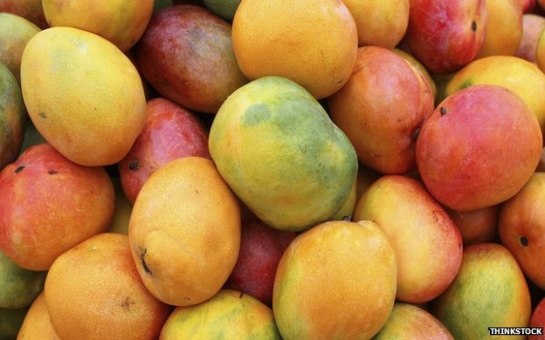There's been a frenzied reaction to the ban on Indian mangoes - a grocer in Leicester told the BBC he sold 1,000 crates of Alphonso mangoes on Wednesday and Labour MP Keith Vaz took boxes of them to 10 Downing Street in a bid to persuade the prime minister to act. But why?There are hundreds of different kinds of mangoes but a few varieties, such as the Alphonso, Kesar and Badami - all native to India - are different from the rest. The mango season only lasts a few weeks. To eat as many mangoes as possible in such a short time, the only option is to put mango into every dish you eat. That's why Indians make mango chutney, mango salads, mango kulfi (Indian ice cream), and mango lassi (a yoghurt drink). They dry mango, put it in curries, stuff it into bread. But best of all is the plain mango.The best ones have a heavy, sweet perfume and the flesh is a deep shade of orange. "Alphonso mangoes have a unique quality - they're non-fibrous, very sweet and pulpy," says Monica Bhandari, of Fruity Fresh. "You don't really eat other mangoes on their own, but biting into a raw Alphonso is a luxury."Most Indian mangoes don't get exported because domestic demand is so high - only 8.5% of the UK's mango imports come from India. And those that do rarely make it to your average British supermarket - they are shipped to small Indian shops around the UK."They don't travel well," Bhandari says. "They bruise easily and need to be eaten quickly. A lot of supermarket supply chains are too long to accommodate Indian mangoes," she says. Inside the boxes, dozens of plump mangoes dressed in snug Styrofoam jerseys sit waiting for you - all pink and yellow and peachy and green.There are concerns the EU ban - introduced because some Indian mangoes shipped in 2013 were infested with fruit flies - will cause some hurt Indian exporters. India sends about 16 million mangoes to the UK every year, worth about £6.3m. But it's easy to surmise that most of the most vocal anger is from mango-loving consumers.(BBC)ANN.Az
Why are Indian mangoes so popular?
World
22:01 | 02.05.2014

Why are Indian mangoes so popular?
Poetry has been written about Indian mangoes. Celebrity chefs, such as Gordon Ramsay, recommend the famous Alphonso for desert. Now, an EU ban has sent mango-lovers scrambling to get their hands on the fruit before stocks sell out. But what's so great about Indian mangoes, asks Pia Gadkari.
Follow us !










